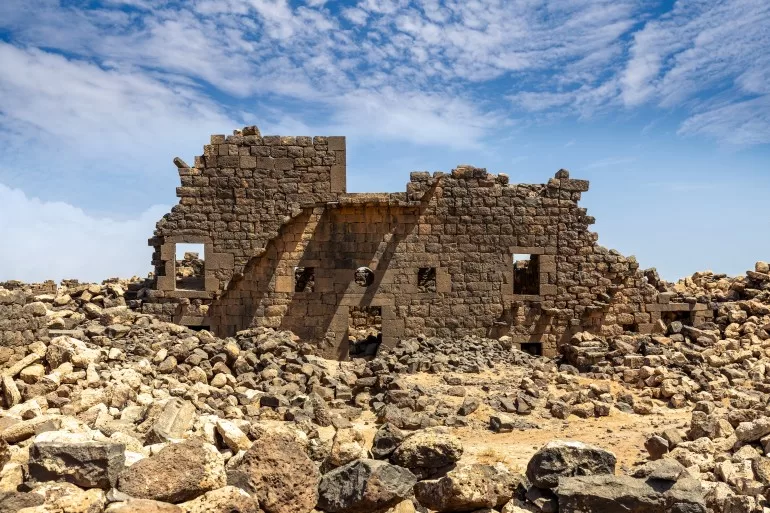The earliest structures at the site date back to the first century AD, when it formed part of the Nabataean Kingdom.
Jordan’s Umm al-Jimal village has been added to UNESCO’s World Heritage List, a move hailed by the country’s tourism and antiquities minister as a “great achievement”.
The United Nations Educational, Scientific and Cultural Organization (UNESCO), which is hosting a meeting of its World Heritage Committee in New Delhi in India, said on X on Friday that the earliest structures uncovered at Umm al-Jimal date back to the first century AD, “when the area formed part of the Nabataean Kingdom”.
It added that inscription in “Greek, Nabataean, Safaitic, Latin and Arabic uncovered on the site … sheds light on the changes in its inhabitants’ religious beliefs”.
The village is near the Jordanian-Syrian border, 86km (53 miles) north of Jordan’s capital Amman, and is known as “the black oasis” due to the prevalence of black volcanic rock in the area.
Jordan’s Minister of Tourism and Antiquities Makram al-Qaisi said in a press conference on Sunday that Umm al-Jimal’s inclusion on the World Heritage List is a “great achievement we should be proud of”.
He said the ministry hoped to invite local and international investors to the site and “present Umm al-Jimal as an attractive tourist destination”.

The name Umm al-Jimal comes from the use of camels as part of trade caravans in the village, which was first settled by the Nabataean peoples in the first century AD and later occupied by the Romans, becoming an important agricultural and commercial centre.
Umm al-Jimal is the seventh historical site in Jordan to be added to UNESCO’s World Heritage List, along with Petra, Quseir Amra, Umm al-Rasas, Wadi Rum, al-Maghtas and Salt.
Tourism contributes between 12 and 14 percent of the kingdom’s gross domestic product (GDP), and its 10 million inhabitants rely heavily on the sector.
Qaisi said Jordan welcomed more than six million tourists in 2023, bringing in $7bn. Most tourists come from Europe, the United States and Canada, followed by the Asia Pacific countries.
But tourism in the country has been affected by Israel’s devastating war on neighbouring Gaza.
Qaisi said the kingdom has seen a 4.9 percent drop in tourism revenue so far in 2024, and a 7.9 percent drop in visitors.
